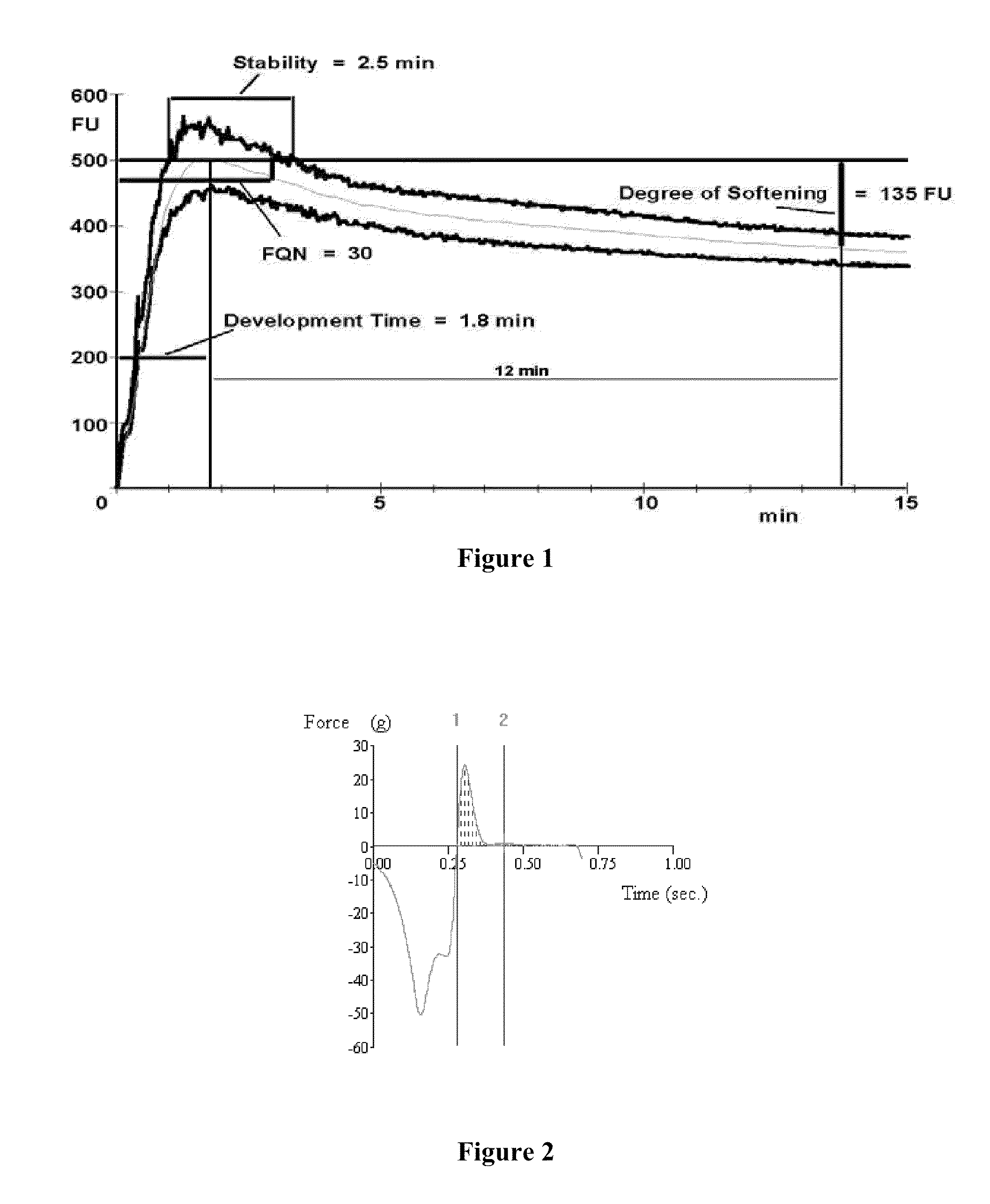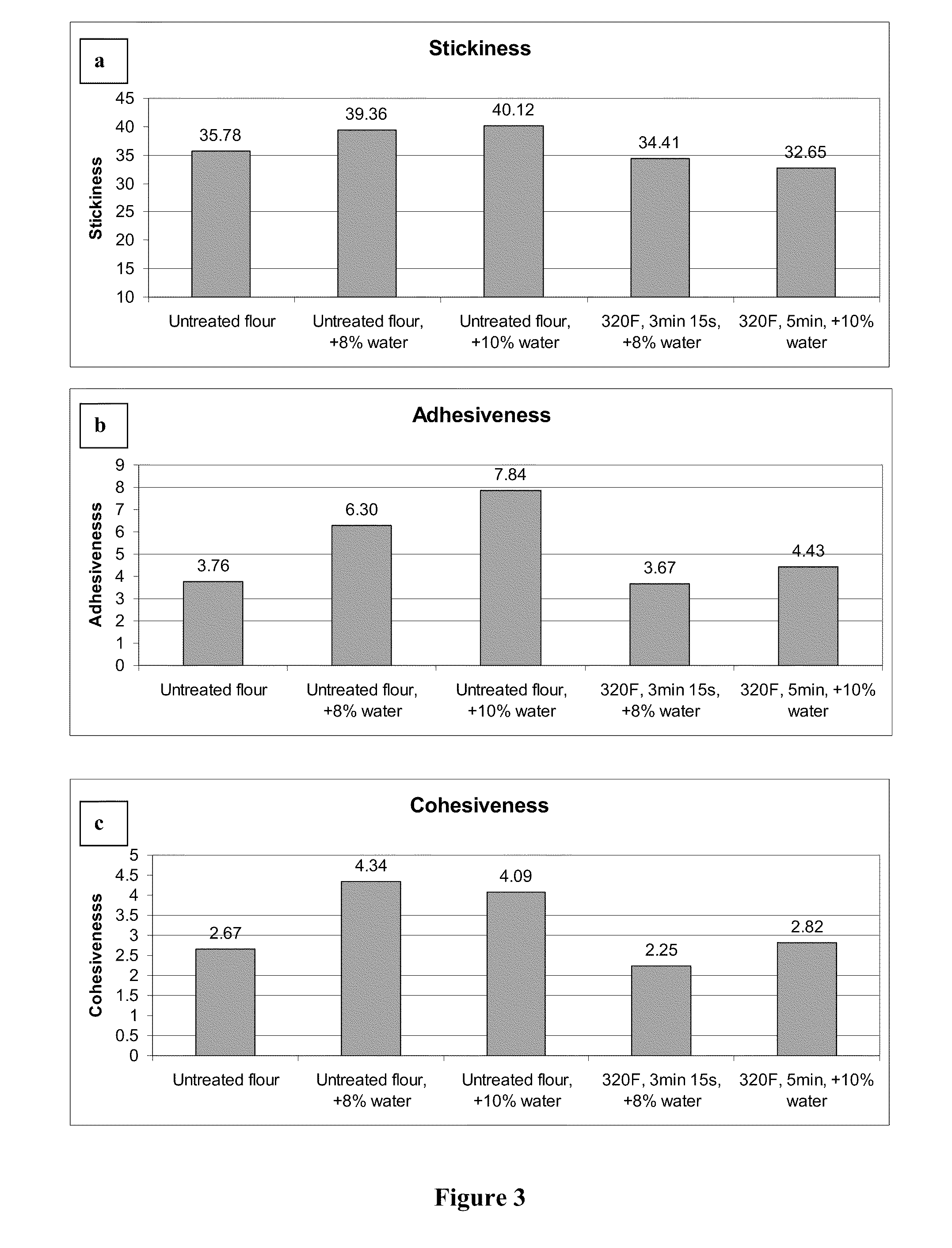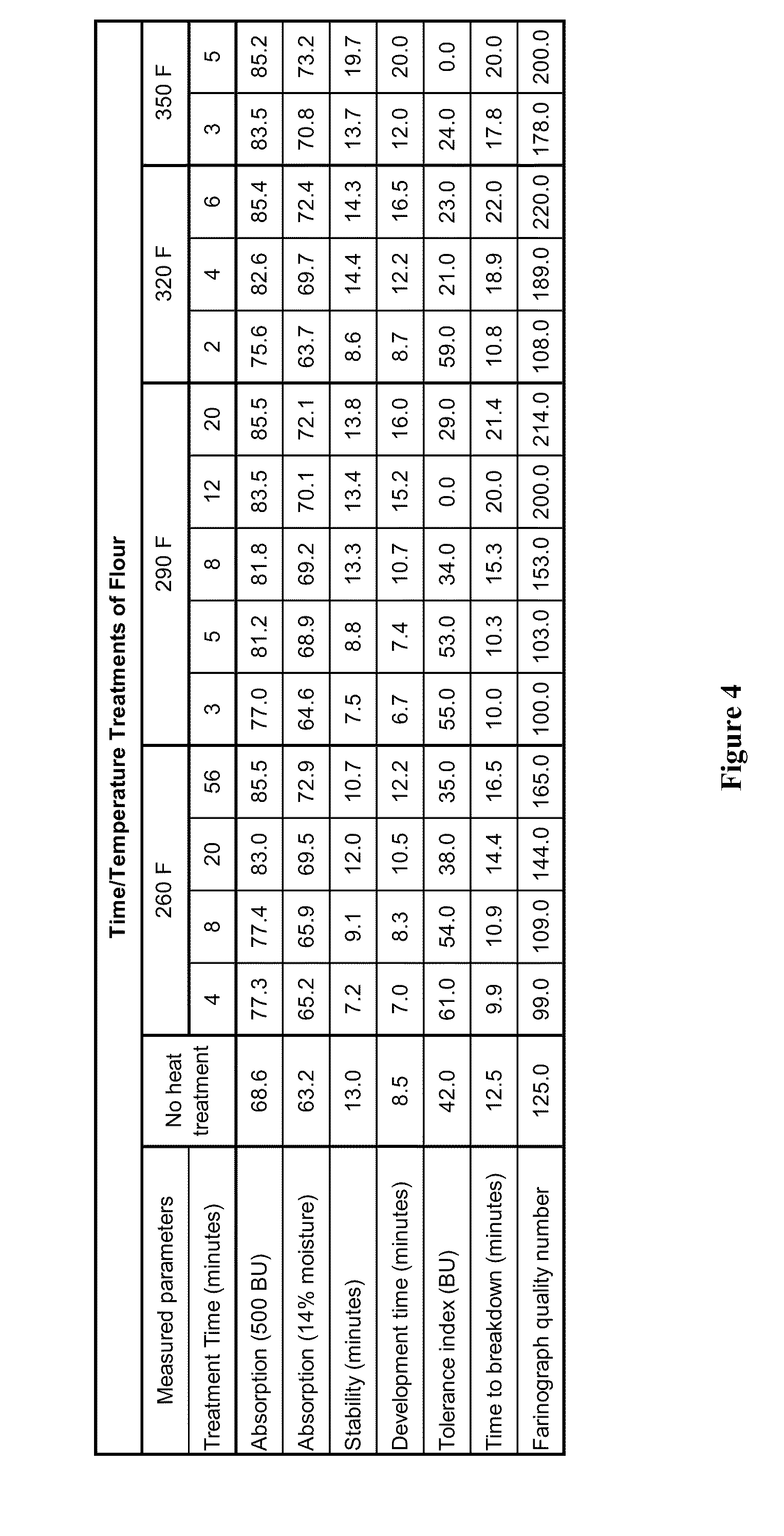Heat-Treated Flour
a technology of heat-treated flour and flour, which is applied in the direction of meat/fish preservation by drying, dough heat treatment, bakery products, etc., can solve the problems of affecting the quality of dough made from heat-treated flour or wheat, and none of the above references provide a method by which the properties of dough can be improved. , to achieve the effect of improving the quality of dough, improving the performance and improving the properties
- Summary
- Abstract
- Description
- Claims
- Application Information
AI Technical Summary
Benefits of technology
Problems solved by technology
Method used
Image
Examples
example 1
[0069]This example describes the heat treatment of flour in a rack oven. Using a mesh bowl, flour (150 g) was sifted onto a metal tray (62 cm×42 cm) with a thickness of approximately 0.1 cm. Two metal trays were heated simultaneously in a convective hot air rack oven. Given the low specific heat of flour (1.4 to 1.8 J / g·° C.), the large heating surface area (2,604 cm2), small mass (150 g), and large surface heat transfer coefficient in a convective hot air rack oven (approximately 100 W / m2·° C.), the flour temperature would reach oven temperature in under one minute. After treatment, the trays were immediately removed from the oven and placed on a table to cool. After cooling, the flour was transferred into plastic containers, and stored at room temperature until further use.
example 2
[0070]Flour heat treated as described in Example 1 was used for further studies to determine the effect of heat treatment on water absorption, sheetability, and baking quality. Variation in water absorption of flour during dough formation was monitored using a farinograph (Brabender, Inc.). Our results indicate that a well-controlled heat treatment results in unexpected and increased water absorption and increased stability time. The time-temperature combinations used were temperatures from 255-330° F. and times from 1-20 minutes. The results indicate temperatures below 255° F. require too long a treatment time for practical applications. Temperatures above 330° F. resulted in off-flavors and dough prepared using such heated flour performed poorly. Flours at 3 different protein levels (13.0, 12.4, and 11.9%), were heated at three temperatures (260, 290, and 320° F., with oven control variability of +8° F. and −2° F.) for at least 4 treatment times depending on the protein content of...
example 3
[0082]This example describes the increased sheetability of the present dough by measurements of dough stickiness, adhesiveness and cohesiveness. SMS Chen-Hoseney Dough Stickiness Rig in conjunction of TAXT2 (Stable Microsystems Ltd., Surrey, UK) was used for measuring dough stickiness, adhesiveness, and cohesiveness. The method has been extensively used to investigate dough stickiness due to overmixing, addition of excess water, overactivity of proteolytic enzymes, difference in wheat varieties and composition.
[0083]Dough samples were prepared using flour, water, yeast, salt, and other minor ingredients (such as enzymes, dough conditioners, etc.). Type of flour and amount of water used in the dough was varied in order to obtain following 6 treatments: untreated flour with 5, 8, and 10% additional water (on flour basis); and treated flour with 5, 8, and 10% additional water (on flour basis). Additional water means water that was added in excess to the recommended water content in the...
PUM
 Login to View More
Login to View More Abstract
Description
Claims
Application Information
 Login to View More
Login to View More - R&D
- Intellectual Property
- Life Sciences
- Materials
- Tech Scout
- Unparalleled Data Quality
- Higher Quality Content
- 60% Fewer Hallucinations
Browse by: Latest US Patents, China's latest patents, Technical Efficacy Thesaurus, Application Domain, Technology Topic, Popular Technical Reports.
© 2025 PatSnap. All rights reserved.Legal|Privacy policy|Modern Slavery Act Transparency Statement|Sitemap|About US| Contact US: help@patsnap.com



